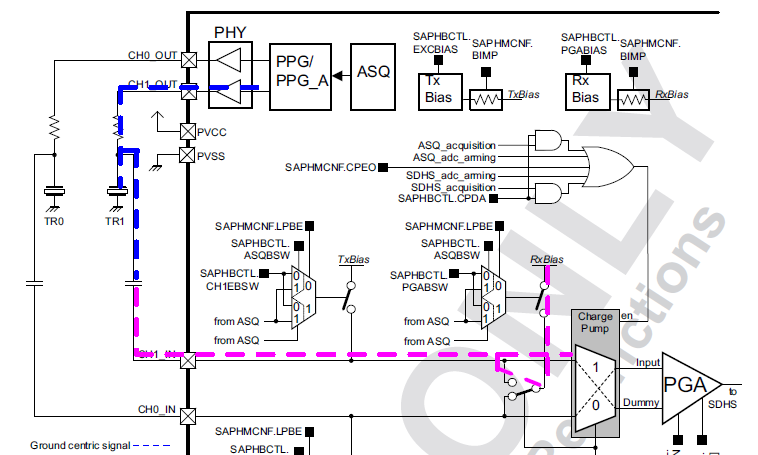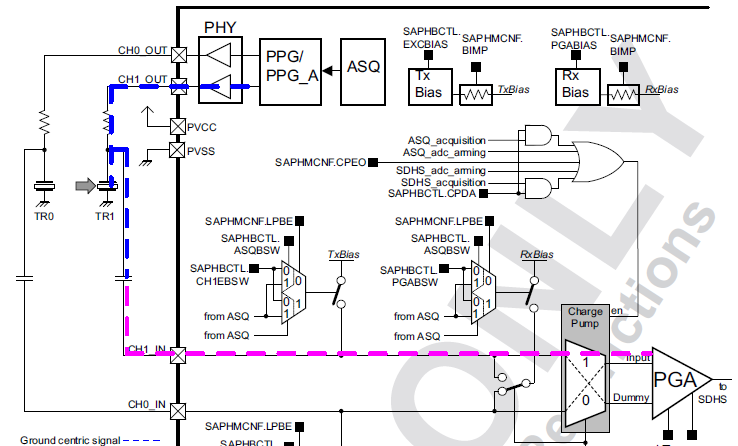您好,关于6043的uss模块,PGA的输入范围我记得是35mv-1000mv,而给出的测试信号是包含y轴下半部分波形的,这个是因为在外部对信号进行了处理吗?还是uss模块设置后本身就能采集负电压?
This thread has been locked.
If you have a related question, please click the "Ask a related question" button in the top right corner. The newly created question will be automatically linked to this question.
您好,关于6043的uss模块,PGA的输入范围我记得是35mv-1000mv,而给出的测试信号是包含y轴下半部分波形的,这个是因为在外部对信号进行了处理吗?还是uss模块设置后本身就能采集负电压?
是的,您的理解是正确的
常是用一个电阻器和cap完成的,如下图所示。
The below pictures are taken from the UG; The one just below shows the situation before the sonic pulse train arrives on CH1. The CH1_OUT terminal provides 0V/GND while CH1_IN terminal provides RxBias (which has the value of PgBias) via the switch. This charges up the coupling cap. But is also shorts the input of the input multiplexer to RxBias (no signal would be received at that moment).

Some microseconds before the acoustic signal is arriving the bias switch is opened; thus allowing the multiplexer to pick up the incoming pulse train. The coupling cap will hold the RxBias value long enough to provide the required DC-offset from ground...
